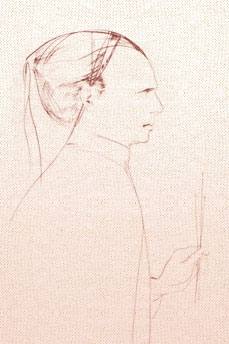Notes d’art Roger Descombes
Article by Pierre Thée following an exhibition at the International Gallery of Geneva, January 1958
One does not resist the urges of a spiritual adventure if the motivations of the adventure themselves answer the mysterious demands of an inner necessity. Therefore, one accepts to be led in confidence, one passes through narrow gates to discover the precise avenues of a world where the pulse of blood and the circulation of the air have nothing in common with the natural pulse and circulation, where the landscape is cut down to the mere lines signifying its power; where the human hand is shown as an object of high-grade precision stripped of its normal use; where the human foot has lost its function as a prop and support to become the very image of that wonder conceived by God the Creator; where the eye is analysed in its mechanism and terribly complex, logical minuteness as a space-recording gadget. The art of an anatomist then, or a philosopher, or an engraver working with a magnifying glass, or a photographer working with a telelens? It would be all that indeed if such art did not have a meaning i.e. a destiny which anyhow escapes us - as it must - and a deep sensuality which acts as a bridge and a language of communication.
We are far from the plastician, formal or not, for whom the play of colours, volumes and lines are the supports of a lyricism or a special drama: Descombes' opus, both engraved and painted, is an homage to whatever the most familiar objects contain in the way of invisible and unchangeable beauty: in mystical language, it is the humble, innocent expression of the prayer of things seen by the common man as objects, but which the "believer", provided he be gifted with sufficient sensitivity, manages to vitalise, to magnetise enough to endow them with the values of subjects to a unique creation. The oval of a face, the pure line of a nape, engraved on the canvas as if with an etching point, the artistocracy of the drawing as well as the careful consideration for a dash of colour, be it even the complicity of chance which accounts for the craquelure in the matter, everything concurs to giving, through the concentration of the artist and the contribution of all the aspects of art, the kind of primeval robustness and elegance akin to the anonymous vestigiae of the great civilisations of the past.
I dare believe that Roger Descombes has in him what it takes to open new vistas in religious art; I mean an art of symbolic figuration in close contact with the mysterious essence of things.
Pierre Thée
Tribune de Genève, January 1958
Translation by Maurice Pollet
Pierre Thée
 Français
Français English
English